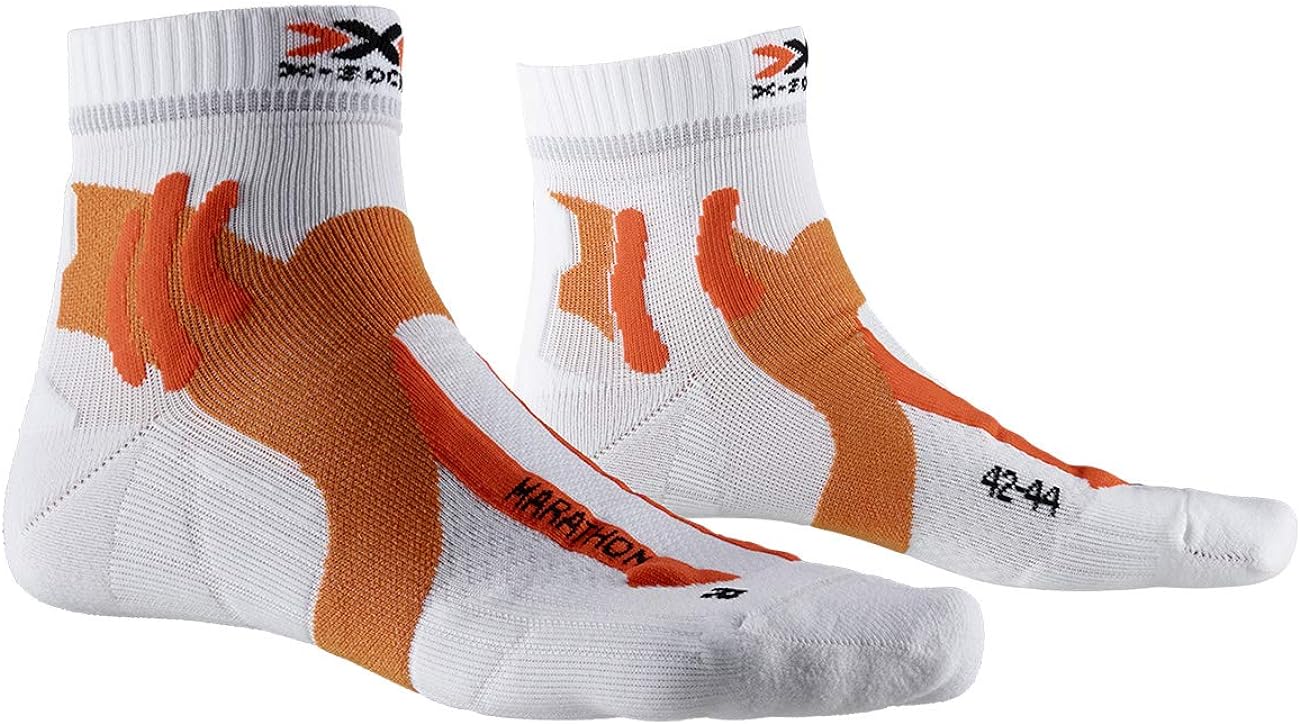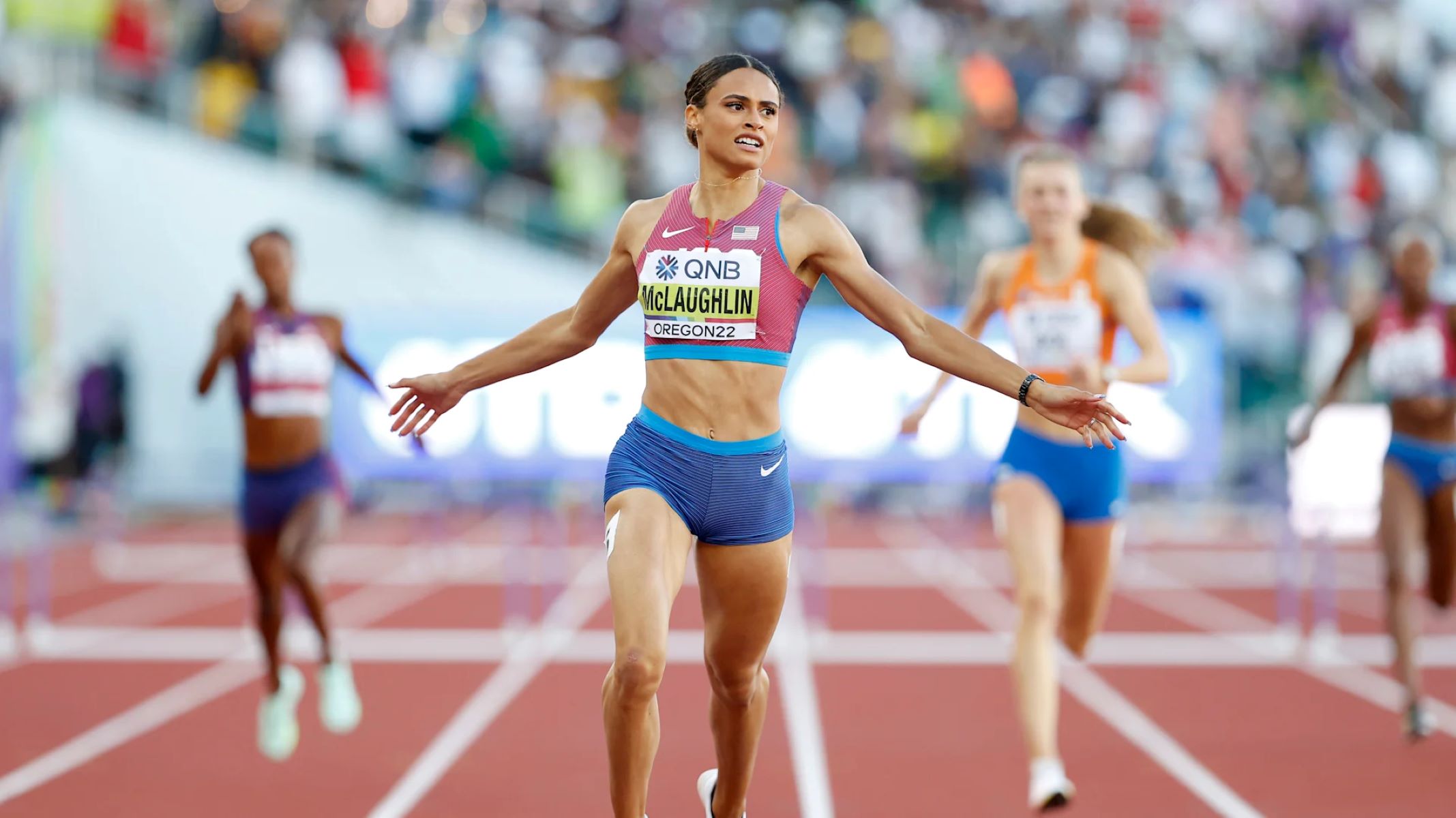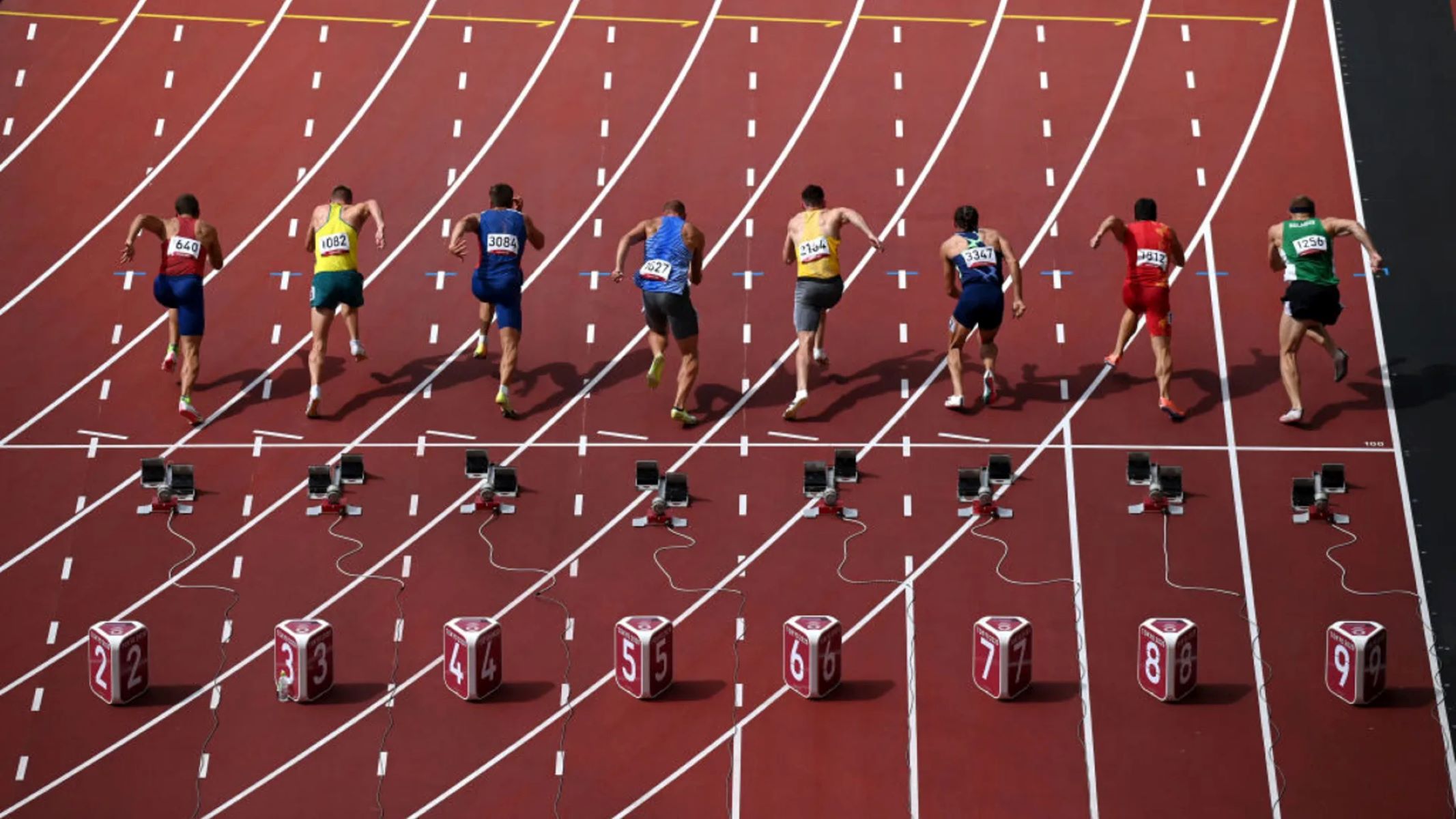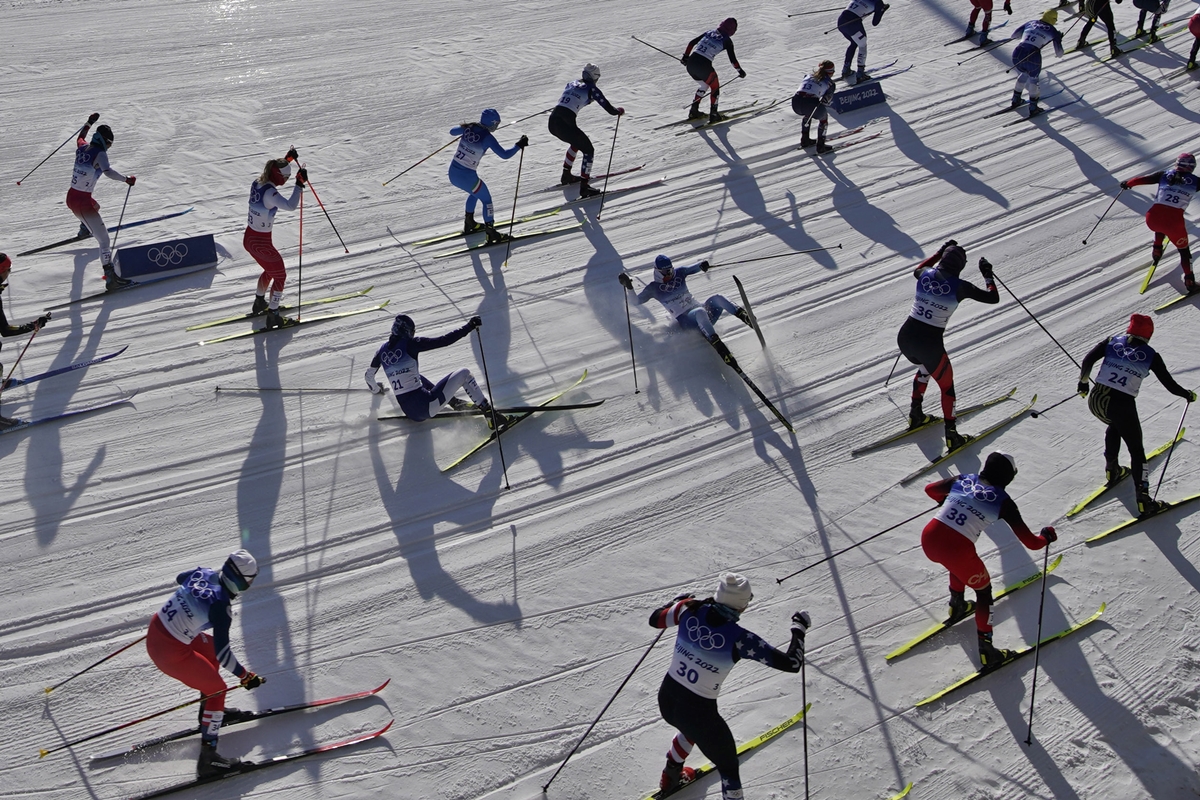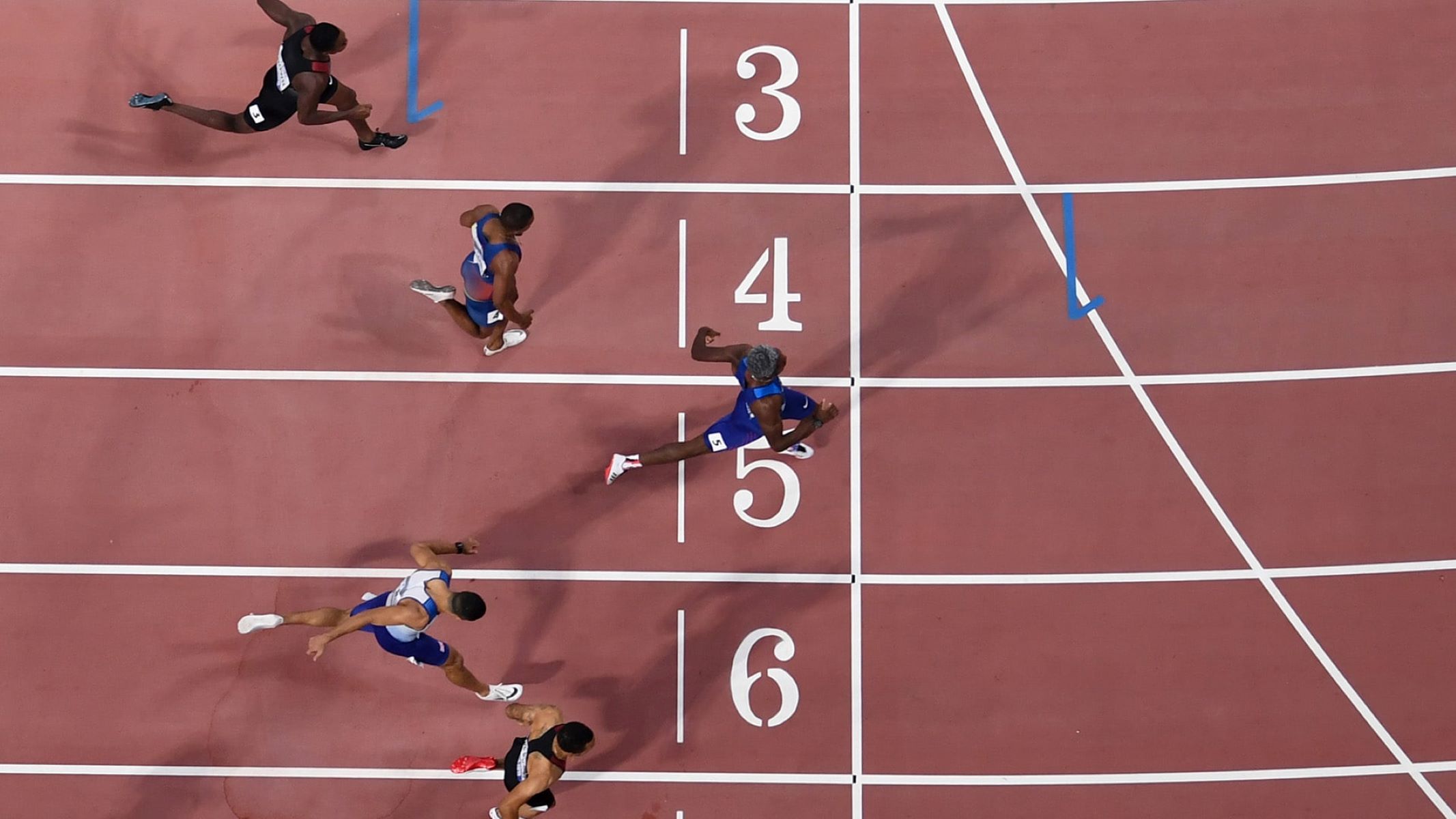Home>Misc>Featured>Why Does The Winter Olympics Have Track And Field
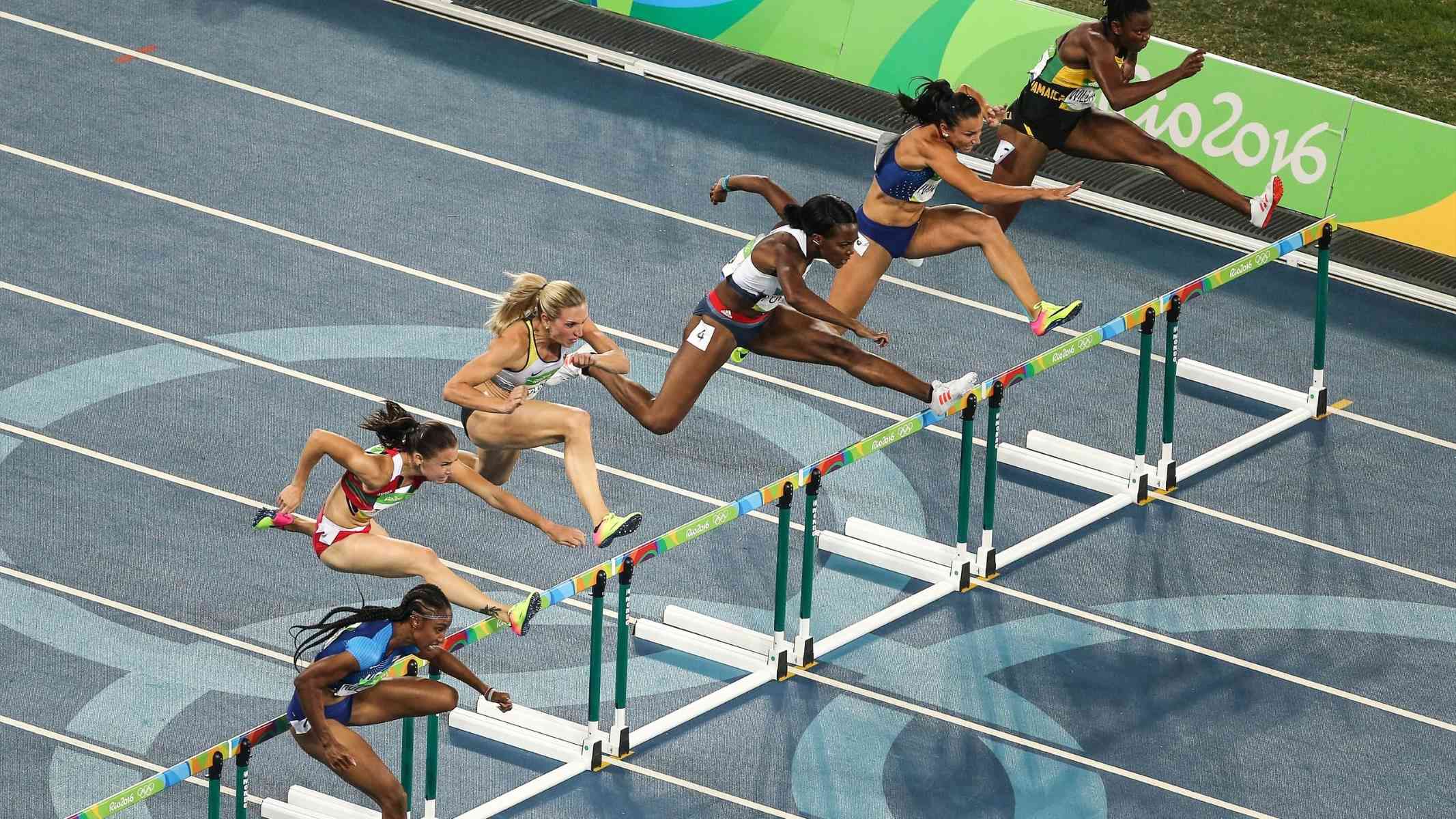

Featured
Why Does The Winter Olympics Have Track And Field
Published: September 15, 2023
Discover the fascinating connection between the Winter Olympics and track and field. Explore the featured events that showcase the athleticism of athletes from different disciplines.
Introduction
The Winter Olympics is a prestigious sporting event that brings together athletes from around the world to compete in a range of winter sports. While traditionally focused on ice and snow disciplines, such as skiing, snowboarding, and ice hockey, the Winter Olympics has also seen the incorporation of track and field events in recent years.
Track and field events are typically associated with the Summer Olympics, where athletes showcase their speed, strength, and agility on the track and in field events such as long jump, high jump, and shot put. However, the inclusion of track and field events in the Winter Olympics has sparked curiosity and debate among sports enthusiasts.
This article explores the historical background, reasons for inclusion, benefits, and challenges associated with track and field events in the Winter Olympics.
While the Winter Olympics primarily focus on sports that take place on snow and ice, there has been a growing interest in diversifying the event by incorporating different athletic disciplines. One of the main reasons behind this is to attract a wider audience and provide athletes with more opportunities to showcase their skills.
In recent years, the International Olympic Committee (IOC) has taken steps to broaden the appeal of the Winter Olympics by including non-traditional sports and events. This move has opened up the possibility of including track and field events in the Winter Olympics, which has sparked excitement and intrigue among athletes, fans, and organizers alike.
The decision to add track and field events to the Winter Olympics was driven by the desire to create a more inclusive and diverse event that reflects the changing landscape of sports. By incorporating track and field, the Winter Olympics is able to attract athletes from different backgrounds who excel in a wide range of disciplines.
However, the inclusion of track and field events in the Winter Olympics has not been without its challenges and controversies. Critics argue that it dilutes the uniqueness and focus of the Winter Olympics, while others believe it adds a new level of excitement and variety to the event.
Historical Background
The history of the Winter Olympics dates back to 1924 when the first Winter Games were held in Chamonix, France. Initially, the event focused solely on winter sports such as skiing, ice skating, and ice hockey. These sports were favored due to their popularity in colder regions and the abundance of snow and ice during the winter months.
Track and field events, on the other hand, have a long-standing history in the Summer Olympics, which first took place in 1896 in Athens, Greece. These athletic disciplines have always been associated with the summer season, with events like sprinting, long-distance running, and various field events attracting athletes from around the world.
Over time, the Winter Olympics began to gain popularity and recognition as a separate entity from the Summer Olympics. As the Winter Games grew in scale and significance, organizers and athletes started to explore ways to expand the event’s reach and appeal.
One of the first attempts to incorporate track and field events into the Winter Olympics was made in 1908. The Games were originally scheduled to be held in both London and Rome, with track and field competitions taking place in Rome during the winter months. However, due to logistical challenges and conflicting schedules, this plan was ultimately abandoned, and the two cities hosted separate Olympic events.
It wasn’t until 2012 that the International Association of Athletics Federations (IAAF) proposed the inclusion of track and field events in the Winter Olympics to the IOC. Several factors contributed to this proposal, including the desire to create a more global and comprehensive sporting event that showcases athletes across a wider range of disciplines.
The idea gained traction, and after careful consideration and evaluation, the IOC officially announced the inclusion of track and field events in the Winter Olympics starting from the 2022 Beijing Games. This historic decision marked a significant milestone in the evolution of the Winter Olympics and opened up new opportunities for athletes and fans worldwide.
By incorporating track and field events, the Winter Olympics aims to enhance its reputation as a multi-sport event that showcases the world’s best athletes across a diverse range of disciplines, regardless of the season in which they traditionally take place.
Evolution of Winter Olympics
The Winter Olympics has come a long way since its humble beginnings in 1924. Over the years, the event has evolved and adapted to the changing landscape of sports and the growing interests of athletes and fans. The inclusion of new sports and disciplines, including track and field events, is a testament to this evolution.
Initially, the Winter Olympics featured a limited number of sports that were popular in colder regions, such as skiing, ice skating, and ice hockey. These sports formed the core of the event and attracted athletes from countries with a strong winter sports tradition.
As the event gained momentum and global recognition, organizers saw the need to expand the scope of the Winter Olympics to attract a broader audience. This led to the inclusion of disciplines like snowboarding, freestyle skiing, and curling, which brought a fresh and modern dynamic to the Games.
In recent years, the International Olympic Committee (IOC) recognized the importance of diversification and inclusivity in the Winter Olympics. They sought to add sports and events that were traditionally associated with the Summer Olympics to create a more comprehensive and diverse sporting event.
Track and field events, which have always been an integral part of the Summer Olympics, were considered for inclusion in the Winter Olympics. This decision was met with both excitement and skepticism, as track and field events were perceived to be more closely associated with warmer weather and outdoor stadiums.
However, the IOC recognized the value of including track and field in the Winter Olympics. They believed that it would provide additional opportunities for athletes to showcase their talents and offer fans a more well-rounded and thrilling sporting experience.
The evolution of the Winter Olympics is also a response to the changing interests and preferences of athletes and audiences. Athletes are constantly pushing the boundaries of their sports, seeking new challenges and opportunities to showcase their skills.
By expanding the range of disciplines in the Winter Olympics, the event attracts a wider pool of talented athletes who excel in activities not traditionally associated with winter sports. This allows more individuals to participate and compete at the highest level, fostering a spirit of inclusivity and equality.
Moreover, the evolution of the Winter Olympics reflects the evolving interests and demands of fans. As the world becomes more interconnected through technology and media, people have access to a wide variety of sports from around the globe. They crave diversity and excitement, and the inclusion of track and field events in the Winter Olympics meets those demands.
The inclusion of track and field events in the Winter Olympics represents a positive trajectory for the event. It ensures that the Games remain relevant, engaging, and provide athletes with new opportunities to shine on one of the world’s biggest sporting stages.
Inclusion of Track and Field Events
The inclusion of track and field events in the Winter Olympics has caused a stir among sports enthusiasts and athletes around the world. This decision represents a significant expansion and diversification of the event’s sporting disciplines, bridging the gap between the traditional winter sports and the excitement of track and field.
Traditionally associated with the Summer Olympics, track and field events have a rich history and are widely recognized as one of the most prestigious and captivating sports in the world. The decision to incorporate them into the Winter Olympics opens up new pathways for athletes to compete and showcase their talents on an international stage.
Track and field events that have been included in the Winter Olympics include disciplines such as sprinting, long-distance running, hurdles, relay races, high jump, long jump, triple jump, shot put, discus throw, javelin throw, and hammer throw. These events require a combination of speed, strength, technique, and endurance, making them a thrilling addition to the Winter Games.
By including track and field events, the Winter Olympics aims to create a more comprehensive and inclusive sporting event. It provides athletes from a variety of backgrounds and disciplines the chance to participate and represent their countries, regardless of the season in which their respective sports traditionally take place.
The inclusion of track and field events also adds a layer of excitement and variety to the Winter Olympics. It introduces new dynamics and challenges that result from competing on different surfaces and in different climates compared to traditional track and field competitions in the summer months.
Furthermore, the addition of track and field events offers a unique opportunity for countries with limited winter sporting traditions to compete and excel in the Winter Olympics. It allows athletes from these countries to showcase their skills and make their mark on the global sports stage, potentially inspiring a new generation of winter sports enthusiasts in their nations.
While some argue that including track and field events in the Winter Olympics dilutes the focus and uniqueness of the event, others see it as a necessary evolution to keep pace with the changing landscape of sports and cater to the interests of athletes and fans. The Winter Olympics has always been about pushing boundaries and embracing new possibilities, and the inclusion of track and field events embodies this spirit of innovation and adaptation.
Overall, the inclusion of track and field events in the Winter Olympics not only enhances the diversity and excitement of the Games but also provides new opportunities for athletes to showcase their skills and for fans to witness the spectacle of track and field in a unique setting. It represents a new era in the evolution of the Winter Olympics, where athletes from various backgrounds unite to compete and inspire viewers around the world.
Reasons for including Track and Field Events
The inclusion of track and field events in the Winter Olympics serves several important reasons that contribute to the overall success and appeal of the Games. While it may seem unconventional at first, there are compelling factors that led to the decision to incorporate track and field into this prestigious winter sporting event.
1. Diversification and Inclusivity: By including track and field events, the Winter Olympics becomes a more comprehensive and inclusive sporting event. It allows athletes from a wide range of disciplines and backgrounds to participate and showcase their skills on the global stage. This diversification enhances the representation of athletes from different regions, backgrounds, and sporting traditions, fostering a sense of unity and equality.
2. Attracting a Wider Audience: The inclusion of track and field events in the Winter Olympics opens the event up to a broader audience. Track and field is one of the most popular and universally recognized sports, and its addition to the Winter Games brings in fans who may not typically follow winter sports. This expansion of the audience base can generate greater interest, engagement, and viewership for the Winter Olympics as a whole.
3. Thrill and Excitement: Track and field events are known for their high intensity and thrilling moments. By including these events in the Winter Olympics, organizers aim to add an extra layer of excitement and spectacle to the Games. The speed, agility, and strength showcased in track and field events captivate spectators and provide unforgettable moments of athleticism.
4. Athlete Opportunities: The inclusion of track and field events in the Winter Olympics provides additional opportunities for athletes to compete at the highest level. Athletes who specialize in track and field no longer need to wait for the Summer Olympics to showcase their talents on the global stage. They now have an opportunity to compete in the Winter Olympics, expanding their horizons and challenging themselves in a unique setting.
5. Innovation and Adaptation: The decision to include track and field events in the Winter Olympics represents the spirit of innovation and adaptation. It shows the willingness of organizers to evolve with the changing sporting landscape, taking into account the interests of athletes and fans. The ability to adapt to new trends and incorporate different disciplines keeps the Games fresh, exciting, and relevant in a rapidly changing world.
6. Legacy and Inspiration: The inclusion of track and field events in the Winter Olympics leaves a lasting legacy and inspires future generations of athletes. It demonstrates that sports and athletic achievements are not limited by traditional boundaries and that opportunities exist in various disciplines. This serves as a source of inspiration for young athletes who may now dream of participating in the Winter Olympics, regardless of their sporting background.
The reasons for including track and field events in the Winter Olympics go beyond just expanding the event’s scope. It is a strategic move to create a more diverse, inclusive, and thrilling sporting spectacle that captures the attention and admiration of athletes and fans globally.
Benefits of having Track and Field in Winter Olympics
The inclusion of track and field events in the Winter Olympics brings about several significant benefits that contribute to the overall success and appeal of the Games. This bold decision expands the event’s sporting disciplines and offers numerous advantages for athletes, fans, and the Winter Olympics as a whole.
1. Enhanced Diversity: The addition of track and field events adds a new dimension of diversity to the Winter Olympics. It provides an opportunity for athletes from different sporting backgrounds to participate in the Games. This diversity fosters inclusivity, representation, and the celebration of athletic talent from a broader array of disciplines and cultures.
2. Increased Fan Engagement: Track and field is a highly popular sport with a massive global following. By incorporating these events in the Winter Olympics, the Games attract a larger fan base. The heightened interest from track and field enthusiasts adds to the overall excitement and viewership, making the Winter Olympics a more captivating and engaging event.
3. Showcasing Athlete Versatility: The inclusion of track and field in the Winter Olympics highlights the versatility of athletes who excel in multiple disciplines. Track and field athletes, accustomed to competing in the Summer Olympics, are given the opportunity to showcase their skills in a different environment. This enables them to exhibit their adaptability and further cement their status as world-class athletes.
4. Broader Opportunities: The expansion of the Winter Olympics to include track and field events creates new opportunities for athletes. Athletes who specialize in track and field no longer need to limit their Olympic participation to the Summer Games. The Winter Olympics provides an additional platform for them to chase their dreams, compete at the highest level, and potentially earn Olympic medals.
5. Increased Sponsorship and Revenue: The addition of track and field events in the Winter Olympics attracts a wider range of sponsors and increases revenue opportunities. This is due to track and field’s immense popularity and the potential for a larger audience. The ability to market the Winter Olympics to both winter sports enthusiasts and track and field fans results in greater sponsorship interest and financial support.
6. Inspiring Future Generations: The inclusion of track and field in the Winter Olympics serves as an inspiration to aspiring athletes worldwide. It demonstrates that boundaries can be transcended, and sporting achievements can be made in unconventional ways. This motivates young athletes to dream big, hone their skills, and aim for participation in the Winter Olympics, regardless of their traditional sporting backgrounds.
7. Legacy of Innovation: The addition of track and field events in the Winter Olympics contributes to the legacy of innovation associated with the Games. It shows the willingness of organizers to adapt and evolve, keeping the event relevant and exciting for athletes and fans. This legacy inspires future generations of organizers to explore new possibilities and push the boundaries of what is deemed possible within the realm of sports.
The benefits of including track and field events in the Winter Olympics go far beyond the expansion of disciplines. It promotes diversity, attracts a wider fanbase, provides new opportunities for athletes, generates increased revenue, and inspires young athletes to dream big. Embracing track and field in the Winter Olympics enhances the event’s prestige and solidifies its position as a global celebration of sportsmanship, resilience, and excellence.
Challenges and Controversies
The inclusion of track and field events in the Winter Olympics has not come without challenges and controversies. While there are many benefits to expanding the event’s scope, there are valid concerns and debates surrounding this decision.
1. Weather and Venue Limitations: The Winter Olympics traditionally take place in cold weather climates with the availability of snow and ice. Bringing track and field events into this environment poses challenges in terms of infrastructure and logistics. Track and field events require specific facilities, such as tracks, jumping pits, and throwing areas, which may be difficult to create or maintain in winter conditions.
2. Scheduling Conflicts: The addition of track and field events in the Winter Olympics creates scheduling conflicts with other sports that traditionally take place during the winter season. Organizers need to carefully plan and allocate resources to ensure a balanced and fair distribution of events without compromising the integrity and scheduling of existing winter sports.
3. Traditional Focus of the Winter Olympics: The Winter Olympics has long been associated with snow and ice sports, which have their own unique appeal. Some argue that incorporating track and field events dilutes the focus and unique identity of the Winter Games. This viewpoint raises concerns about losing the distinctiveness of the event and potentially overshadowing other winter sports.
4. Different Athlete Preparations: Athletes specializing in track and field traditionally train and prepare for the Summer Olympics, which takes place in warmer weather conditions. The addition of track and field events in the Winter Olympics requires these athletes to adapt their training and conditioning to the specific demands of competing in colder climates. These adjustments may pose challenges and impact the performance of athletes.
5. Contention for Resources and Attention: Bringing track and field into the Winter Olympics may result in a shift in resources and attention towards these events, potentially impacting the funding and support available for traditional winter sports. There is concern that winter sports, which have their own dedicated fan base and cultural significance, may be overshadowed by the inclusion of track and field.
6. Public Perception and Validity: The inclusion of track and field events in the Winter Olympics raises questions about the public’s acceptance and understanding of the decision. Some argue that the move may be seen as an attempt to maximize commercial interests or increase the overall appeal of the Games, rather than a genuine effort to expand the event’s inclusiveness and sporting variety.
It is important for organizers to address these challenges and controversies surrounding the inclusion of track and field events in the Winter Olympics. Careful planning, open dialogue with stakeholders, and an emphasis on maintaining the integrity and value of both traditional winter sports and track and field events will be essential in ensuring a successful and harmonious Games.
Conclusion
The inclusion of track and field events in the Winter Olympics marks a significant evolution in the history of the Games. While initially associated with winter sports, the Winter Olympics has embraced diversification and inclusivity by incorporating track and field disciplines. This decision brings numerous benefits to athletes, fans, and the event as a whole.
By including track and field in the Winter Olympics, the event becomes more comprehensive and offers athletes from various disciplines the opportunity to participate on a global stage. This diversity enriches the representation and celebrates athletic talent from around the world.
The addition of track and field events also expands the fanbase of the Winter Olympics. Track and field’s popularity attracts a wider audience and generates greater engagement and viewership. This enhanced interest contributes to the overall excitement and success of the Games.
The inclusion of track and field in the Winter Olympics provides athletes with new opportunities to showcase their versatility and compete at the highest level. It allows track and field athletes, traditionally associated with the Summer Olympics, to demonstrate their skills in a different setting, opening doors for greater participation and achievement.
However, this decision has not been immune to challenges and controversies. Scheduling conflicts, weather limitations, and concerns about diluting the focus of the Winter Olympics have sparked valid debates. It is crucial for organizers to address these concerns and maintain a balance between traditional winter sports and track and field events.
In conclusion, the inclusion of track and field events in the Winter Olympics is an innovative step towards creating a more diverse, inclusive, and thrilling sporting event. It opens doors for athletes, inspires future generations, and showcases the adaptability and versatility of sports. By embracing this evolution, the Winter Olympics continues to captivate audiences, push boundaries, and celebrate the spirit of global sportsmanship.
